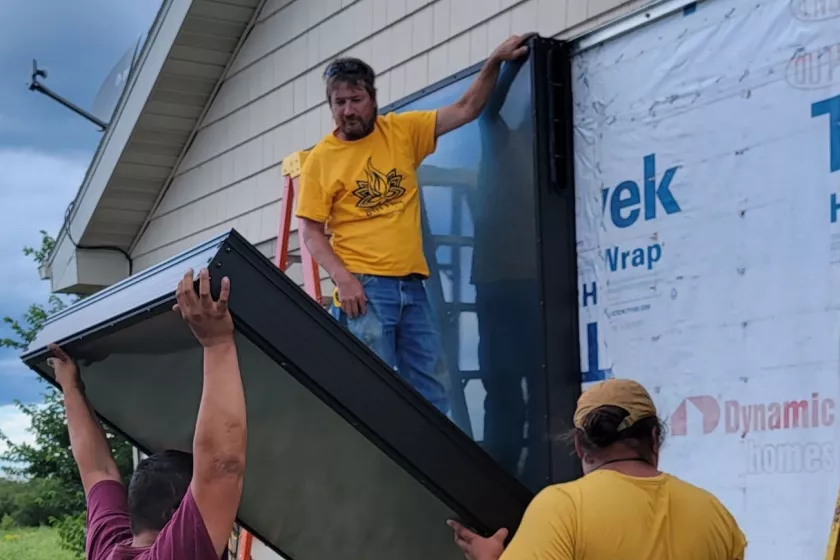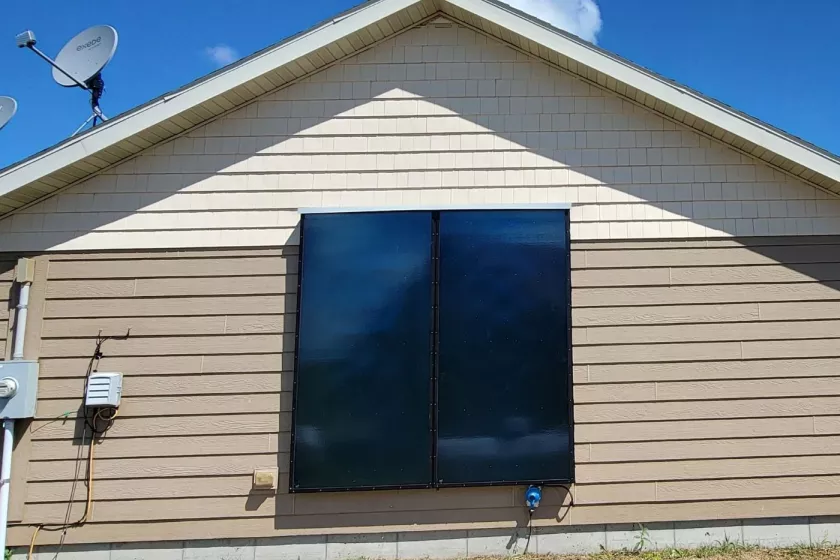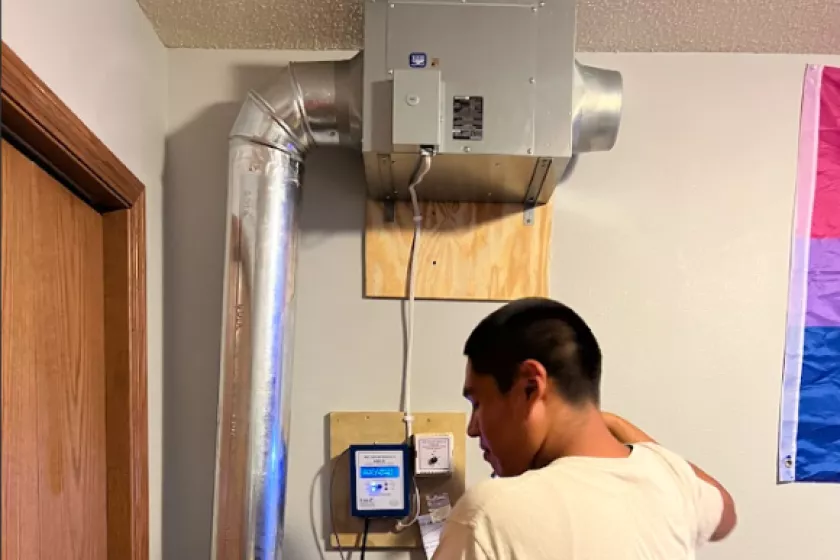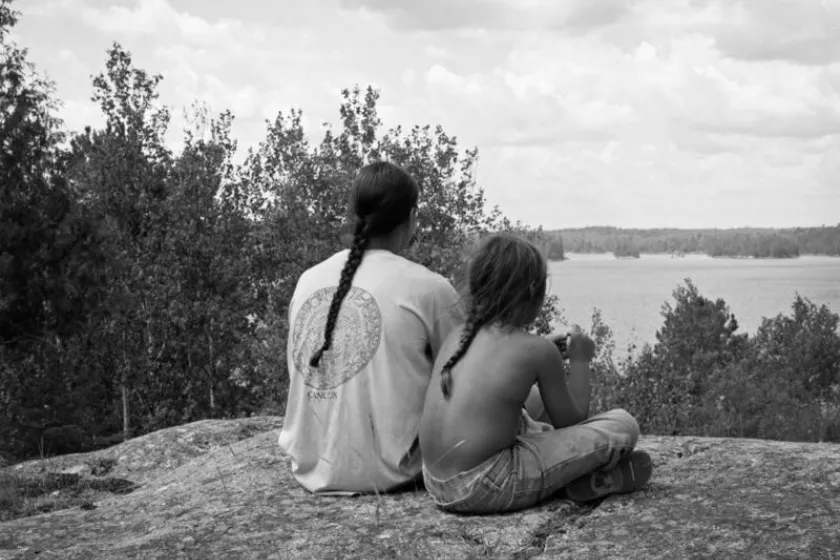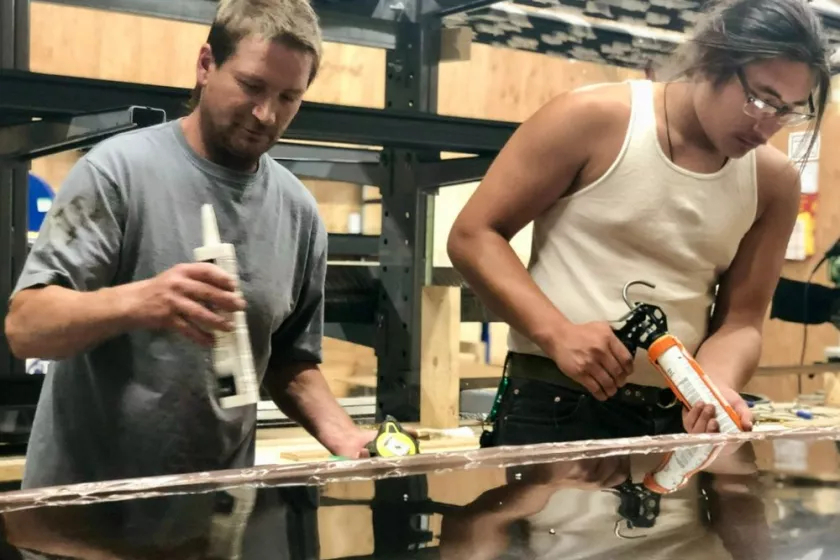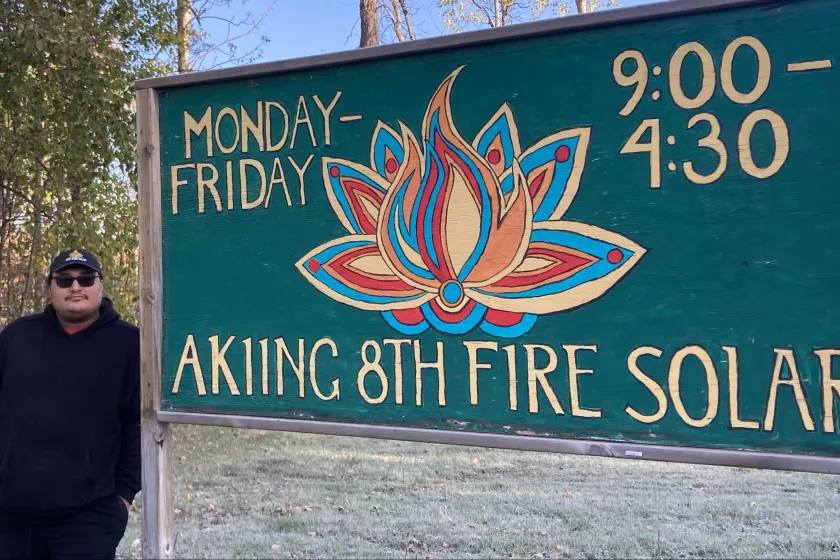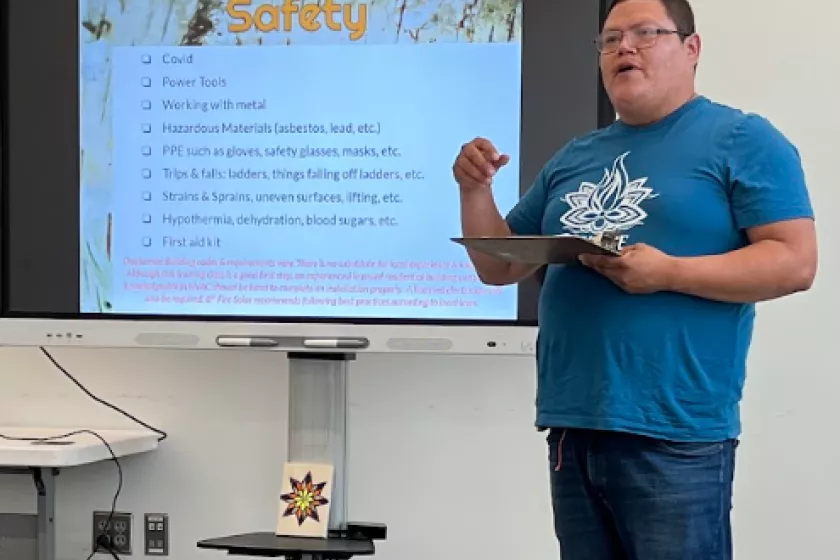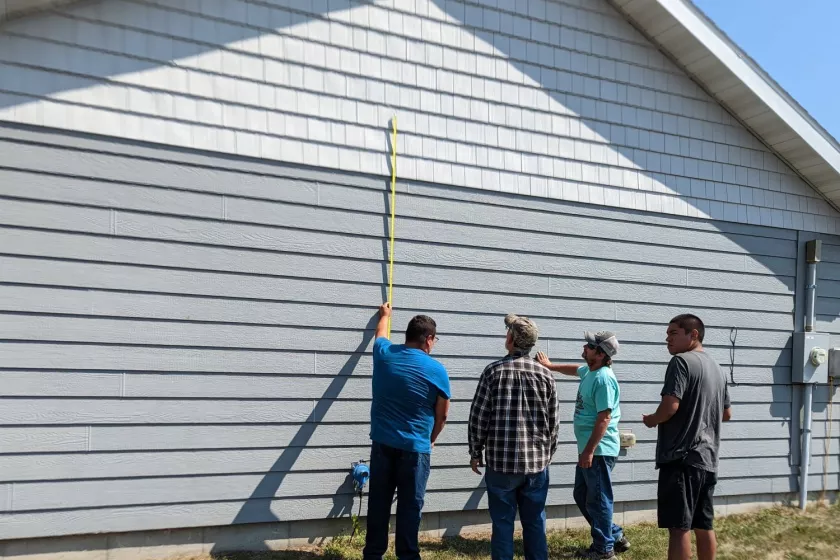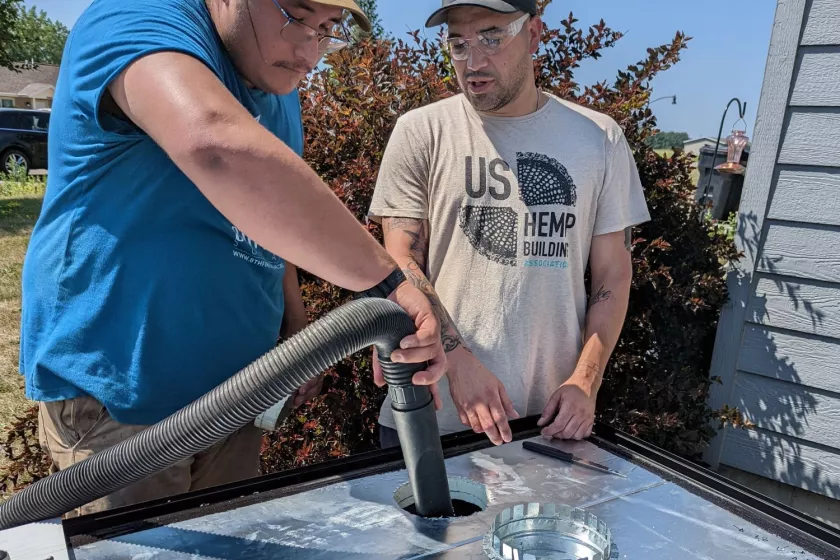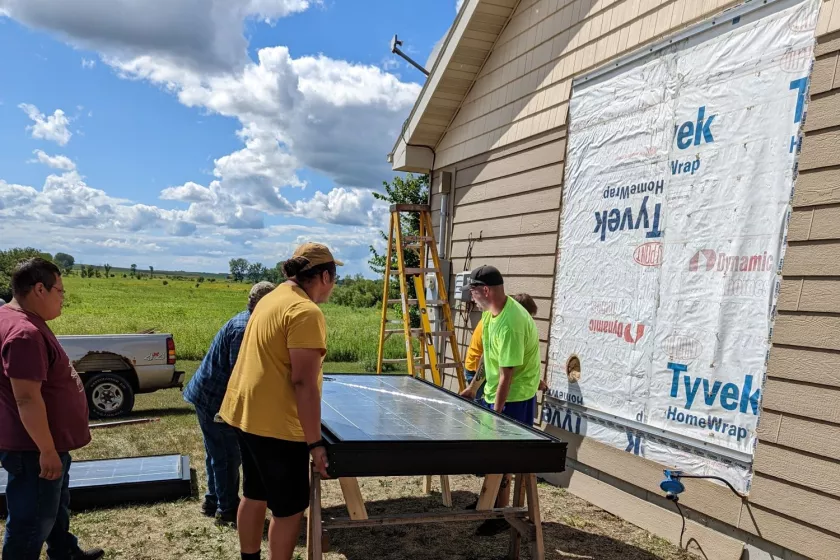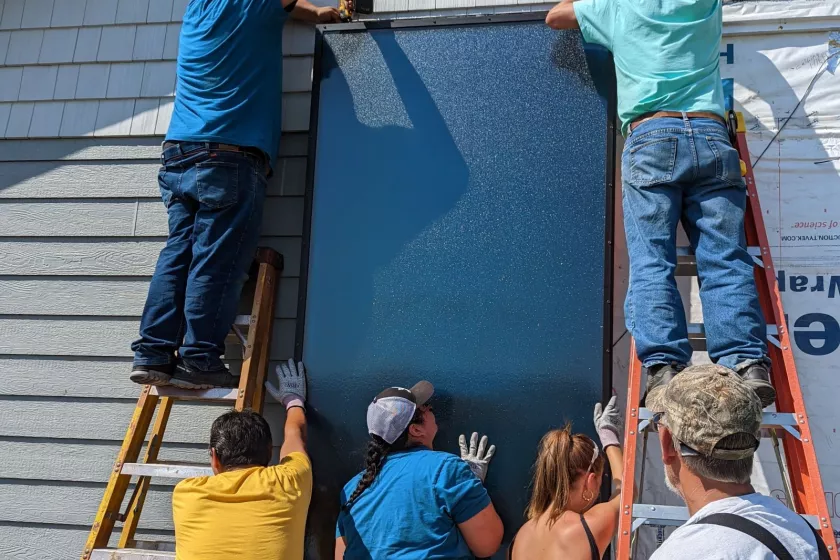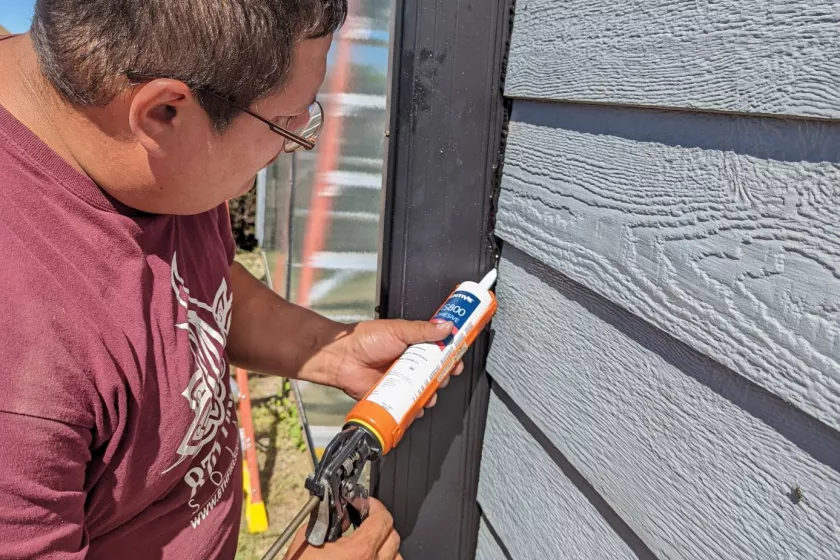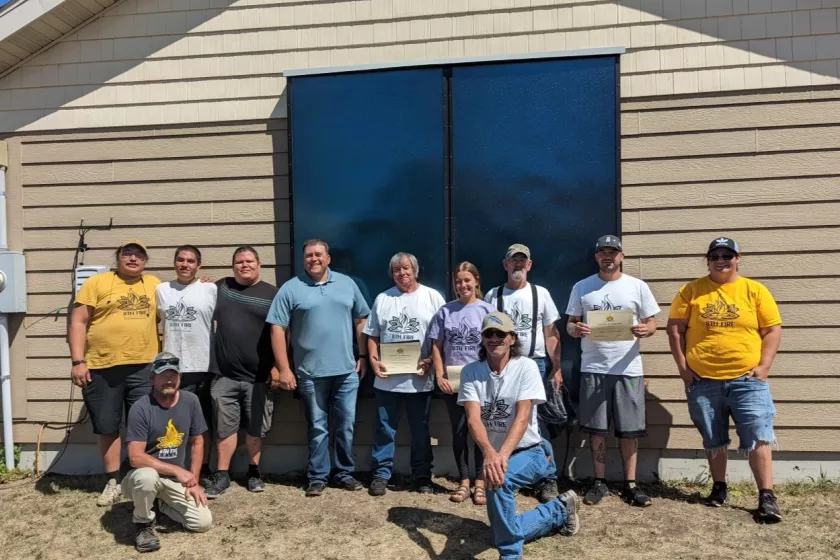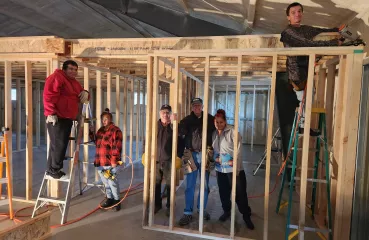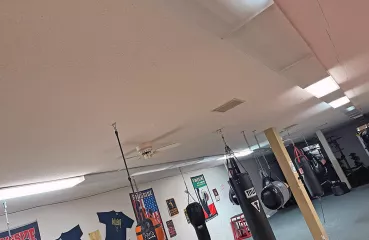Heating accounts for the majority of energy used in an average U.S. household. The cost of this heat, especially in many of Minnesota’s tribal and rural communities, can be a serious burden.
“There’s a dilemma for people on the reservation that we call, ‘heat vs eat.’ Are they gonna pay for propane to keep themselves warm or are they going to pay for groceries?” says Gwe Gasco, Marketing and Sales Director at 8th Fire Solar.
8th Fire Solar is a solar thermal business located on the White Earth Reservation in Northwestern Minnesota. The business primarily manufactures and installs thermal solar systems on privately owned properties. They also take part in grant-funded installations in low-income communities.

